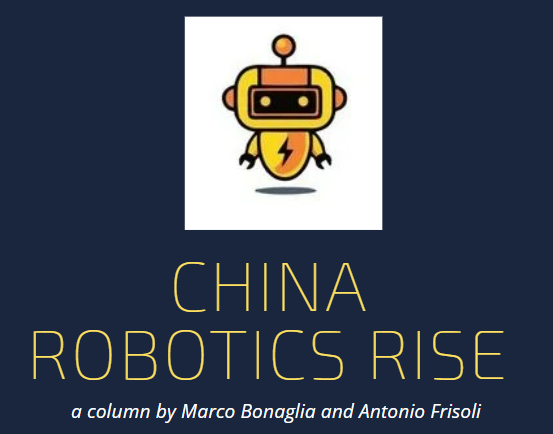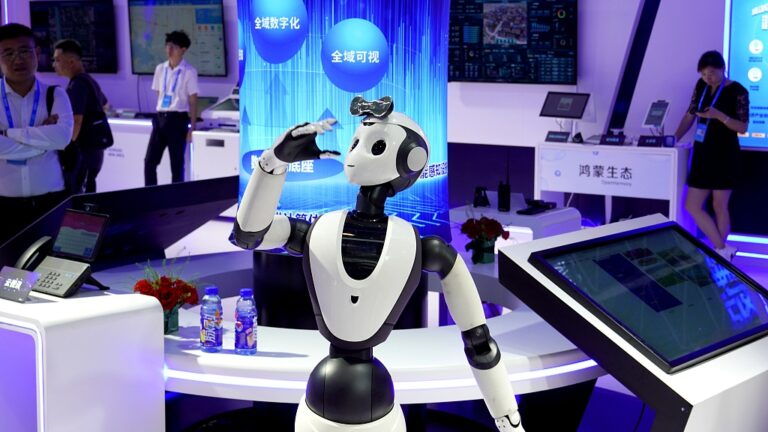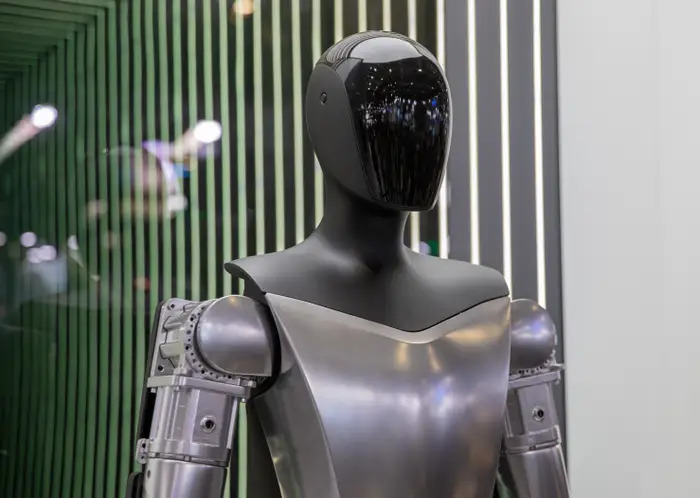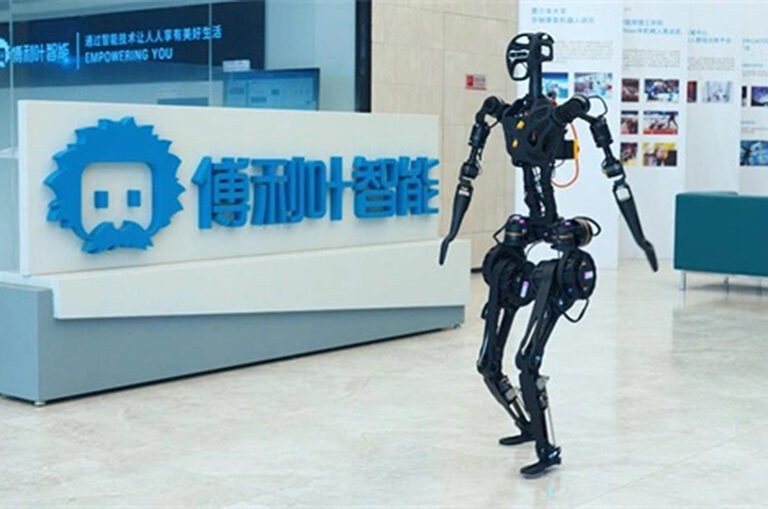
China Robotics Rise 3 – The future is Humanoid

1 – New guidelines out to lead the new revolution
In China, on November 2, 2023 after receiving attention from the capital and witnessing the emergence of various products, humanoid robots once again received top-down policy support. It seems to be moving from a momentary “trend” in the market towards the long-term “trend” of the industry.
In the early stages of industrialization of humanoid robots, relevant policies from the Ministry of Industry and Information Technology can clearly define development directions and goals, and their guidance and promotion are of great significance. It is expected that in the future, this sector could develop into a trillion-yuan market. Currently, there are more than 10 domestic manufacturers that have released products, and A-share listed companies have also begun to lay out their strategies. Despite facing defects such as unstable technical performance, high costs and prices, and insufficient commercial landing scenarios, the industry as a whole is described as having a “twisting road but a bright future.”
The Ministry of Industry and Information Technology issued last month the “Guiding Opinions on the Innovative Development of Humanoid Robots“. According to the strategic deployment based on a timeline, by 2025, the innovation system for humanoid robots will be preliminarily established, and breakthroughs will be made in key technologies such as “brain, cerebellum, limbs.” This aims to ensure the safe and effective supply of core components. By 2027, the innovative capabilities of humanoid robot technology will significantly improve, forming a secure and reliable industrial supply chain system. This will construct an internationally competitive industrial ecosystem, with overall capabilities reaching the world’s advanced level.
Before this, national ministries, including the Ministry of Industry and Information Technology, had already provided support for the development of the humanoid robot industry. On September 13, the Ministry of Industry and Information Technology issued a notice on the organization of the 2023 Future Industry Innovation Task Declaration, and humanoid robots are one of the four key directions. In addition, at the regional level, robots have been listed as key development projects in Beijing, Shanghai, and Shenzhen. Various regions have successively issued industry support policies.

Lu Hanchen, the director of the Gaogong Robot Industry Research Institute, recently stated that although mass production of humanoid robots is still a certain distance away, it cannot be denied that 2023 can be considered the “first year” of Chinese humanoid robots. Chinese manufacturers, through their collective efforts, have made “making humanoid robots” not so distant. More than ten companies have released products related to humanoid robots. Because humanoid robots are considered an advanced form of robots, they represent a typical technological product that integrates multiple disciplines and is also a complex engineering project in the history of human technology. To some extent, it is also a reflection of the country’s technological strength. In the early stages of the industry, the issuance of the “Opinions” can be said to clearly define the direction and goals for the development of new industries and technologies, which is of great significance.
Guo Tao, an angel investor and senior artificial intelligence expert, also said that the Ministry of Industry and Information Technology pays close attention to humanoid robots, possibly because humanoid robots integrate advanced technologies such as artificial intelligence, high-end manufacturing, and new materials. They are expected to become disruptive products after computers, smartphones, and new energy vehicles. They have the potential to profoundly change human production and lifestyle, reshaping the global industrial development pattern. After the release of the “Opinions,” it is expected to have a positive impact on China’s humanoid robot industry, including accelerating technological research and development, improving the security and reliability of the industrial supply chain, and nurturing globally influential ecological enterprises.
China’s humanoid robot industry is still in its infancy but still lags behind the international advanced level. Currently, supporting the development of humanoid robots faces challenges such as immature core technology development, high product costs, difficulty in landing application scenarios, and incomplete laws and regulations. In the future, the government needs to improve and perfect the legal and regulatory system and industry standards, continuously increase funding and policy support, further stimulate private investment vitality, jointly promote key technology research and development, actively build a good industrial ecosystem, promote the high-speed development and mature landing of commercial robot technology.

2 – The contents of the Guidelines
The Ministry of Industry and Information Technology (MIIT) released guidelines to support the development of humanoid robots, i.e., robots built to mimic human motion and interaction. The plan extols the potential of such robots to revolutionize manufacturing and service industries, positioning them as the next “disruptive technology” comparable to the advent of computers and smartphones. By 2027, policymakers aspire to deeply integrate humanoid robots into the real economy. Interim targets set for 2025 include:
- Achieve breakthroughs in key technologies related to environmental perception, behavioral control, mechanical arms, lightweight skeletons and more
- Ensure the safe and effective supply of core components, including sensors, actuators, controllers and power sources
- Reach mass production of humanoid robots at an international advanced level
- Cultivate two or three companies with global influence and a cohort of specialized small- and medium-sized enterprises
From Beijing’s perspective, humanoid robots represent the culmination of advancements across cutting-edge technologies, offering immense potential for economic growth. They bring together AI, high-end manufacturing, and new materials. The potential application scenarios cover manufacturing, service sectors (medical care, housekeeping), rescue operations and even defense.
For the moment, the industry is still in its infancy and faces challenges such as unreliable technical performance, as well as high costs and prices. Higher performance will need to be reached before large-scale implementation can begin to bring costs down. All the same, major Chinese robotics and tech firms have already begun development of humanoid robotics products, such as Fourier Intelligence, Xiaomi and Xpeng. Fourier Intelligence has even announced that its GR-1 robot has entered mass-production.
China’s proactive embrace of humanoid technologies, coupled with its support for AI and big data, could confer a competitive advantage, while also enhancing the nation’s appeal as a production hub for foreign firms. Yet it will not be a one-horse race. Japanese and American firms are also developing their own products and building on strengths in robotics, sensors and semiconductors. The industry looks set for intense competition between companies from Japan, the US and China over the coming decade.

3 – Chinese humanoid robots, some examples
The Chinese humanoid robot industry has already established a certain industrial foundation, with over 10 companies, including Xiaomi, Ubtech, Zhiyuan Robotics, Chasing Tech, Datote, Fourier Intelligence, Yushu Technology, and Xiaopeng Motors, having released humanoid robot products or concept products.
Experts in the industry emphasize that finding suitable application scenarios and achieving commercial implementation are crucial for the development of the humanoid robot market. Lu Hanchen mentioned that while humanoid robot products are maturing in terms of performance standards, they can be applied to various scenarios across different industries. Currently, there is enormous potential demand in the fields of consumer services and manufacturing. However, the application of humanoid robots in downstream scenarios is not an instantaneous process but requires time for adjustment and continuous iteration for improvement.
Among the already released products, Xiaomi’s Cyberone focuses on perception and communication, capable of sensing human emotions and recognizing 45 types of human semantic emotions. Ubtech’s Walker X is mainly used in technology exhibitions, film and television entertainment, commercial performances, and government and enterprise exhibition halls. Fourier Intelligence’s GR-1 is planned for promotion in various applications such as industry, rehabilitation, home, and research. Chasing Tech’s Cloud Ginger 2.0 is applied in scenarios such as in-store promotions, live streaming sales, education and research, cleaning, care assistance, and reception guidance. Zhiyuan Robotics’ Expedition A1 is expected to be initially applied in the industrial manufacturing sector before gradually moving towards consumer applications. Xiaopeng Motors’ PX5 plans to prioritize on-site applications in Xiaopeng’s factories and sales scenes, eventually providing stable and reliable value.
However, the existing humanoid robots generally have a high price due to the high costs of research and development, with a single unit often costing millions of yuan. Lu Hanchen believes that cost reduction depends on the scale of landing and application, and the prerequisite for scale is that the performance of humanoid robots can meet people’s usage expectations. Currently, the landing application of humanoid robots is still in the exploratory stage. The first stage is to satisfy product requirements. When the performance of humanoid robots becomes “human-like” enough or functionally powerful enough, their prospects will undoubtedly surpass all current categories of robots.
China’s current robot market is mainly dominated by industrial robots. Within this market, the leading domestic manufacturers in terms of shipment quantity this year include Estun (002747.SZ), Huichuan Technology (300124.SZ), and Efort (688165.SH). These manufacturers, with high market share rankings, are reportedly paying attention to the development of humanoid robot technology. However, none of them have developed products or released specific plans, according to previous interviews with Caijing News.
Among the A-share listed companies making progress, Tianqi Shares (002009.SZ) previously cooperated with Ubtech to establish a joint venture and expected the delivery of the first prototype of an industrial humanoid robot by the end of December 2023. It is reported that Tianqi Shares mainly focuses on the intelligent equipment industry, with its main business including the core business of automotive intelligent equipment. In terms of application scenarios, humanoid robots will be matched with the company’s system solutions for automotive intelligent equipment, providing end customers with higher-quality products and services.
Lu Hanchen stated that China’s humanoid robot industry already has a certain industrial foundation. Looking at various core components, some overlap with existing industrial robots, such as reducers and some motors. However, the demand for humanoid robots is more prominent in sensor components, intelligent software, and AI large models. Additionally, linear actuators are the first to be introduced and applied in humanoid robots. To some extent, China already has a certain industrial supporting foundation, but there are still some shortcomings to be filled, such as the dynamics control algorithm for the whole body, high-performance controllers, high-performance force sensors/tactile sensors, and high-power-density motors.
Harmonic Drive (688017.SH), a leading company in harmonic reducers with a market share of 24.7% in China, is primarily serving robot manufacturers downstream. The company has disclosed that it is advancing humanoid robot projects, but the commercial operation of the products is not proceeding at a fast pace.
Written by Marco Bonaglia and Antonio Frisoli



